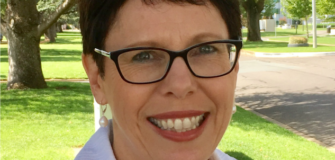Whether you call it financial sustainability or financial resilience, it is the holy grail today for not-for-profit leaders.
Leaders need to think beyond funding and devise a sustainable business model. A critical part of this is the new marketing mix, which has two key differences: it’s about connecting with a new segment – paying customers; and it involves a new skill – co-designing products and services with these new customers.
The new NFP marketing mix blend the old with the new. It embraces stakeholder and community engagement, fundraising engagement, and the new world of earned revenue.
In the financial sustainability conversation, this new world of earned revenue means
- Finding potential customers (distinct from your beneficiaries)
- Co-designing and developing products and services to generate earned, untied revenue, then
- Developing ongoing relationships to deeply engage with these new customers so you can keep co-designing your next range of offerings.
Once you have this framework in place, you can start to build a financially resilient business model.
People often think of marketing as simply a way to communicate with the larger world. However, the bigger asset is listening to your market and translating that into products and services it actually wants. There are fancy terms for how to do this: participatory design, co-design, co-creation or something else altogether. In essence, it is about involving your customers in both designing and implementing new offerings.
As an example, the federal government wanted to develop technology to link communities to healthcare services. It could have gathered a bunch of boffins and services planners in a room and hammered out how the tech would work, then served it hot with fries to the community. But the community may not have wanted it hot.
What it did instead was commission a participatory design process to work with more than 20 communities and expert groups to hear how those with lived experience, carers and experts wanted to not only use the tech but what they wanted as service outcomes. This led to the development of set of requirements for both tech and services, and opened up whole new sources of value for the community and earned revenue for service providers.
On a smaller scale, a community service organisation wanted to understand how best to sustain itself when programmatic funding dropped. Its first attempts saw it looking for ways to develop new services to change up the mix of packages it could apply for. Then it engaged with the community, and what emerged was a range of “private” services the well-heeled wanted and were willing to pay for. The key was not just repackaging existing services, but designing new services with the help of their new customers.
Plenty of online resources are available to help organisations through this process, and there is a growing service sector equipped to help. But when looking for help, ensure you check an advisor’s previous successes and their references. It is easy for people to say they innovate, but it’s much harder to find people who actually have.
OK, so now your organisation has new earned-revenue ideas, it’s time to hit the market, right? No…
- Connect
Developing an authentic business model that enables you to deliver these new services (and value propositions) is essential to generating sustainable earned revenue. Once you have your customers excited, you must be able to live up to your promise.
But your promise is not only how you create and deliver your new products and services, it’s also about understanding how your customers want to engage with you and how they want to use your shiny new offers. Do they want face-to-face delivery or all online? Do they want personalised services or light touch? Do they want to help with the next product or do they want you to run with it?
The new marketing mix has a role to play here, too. Remember, it is not a one-way valve going out. Think about customer engagement.
There is absolutely no point in turning to the “production” of your new offerings if you don’t have a clear handle on customer engagement requirements. You need to heed what your new customers tell you they value.
- Skill up
Either expand the remit of your marketing department to include this commercial mindset, or hire people with commercial experience. Marketing will no longer just focus on communicating with donors and securing funding. A new skillset is needed to drive the revenue-generating arm of your organisation, and this requires commercial nous and the ability to anticipate what value propositions will be demanded from your customer segments.
If all this seems beyond your organisation, then a great alternative is to partner with a corporate who has the expertise. Instead of the company donating money to your organisation, a strategic partnership can be formed in which it provides in-kind services. This could result in a better return for your organisation and higher engagement for the partner. Spark Strategy has a white paper available on its website, Partnering for Purpose, which tells how to set up corporate and NFP partnerships.
Having a long-term plan based on an adaptive business model is the answer. Think long, act short. Day-to-day, your organisation should be tracking trends within your market. Long term, your plan should anticipate future value that will be demanded by your customers.
With a flexible business model you will be able to pivot your value proposition if needed. Continually co-designing products and services with your paying customers will mean your organisation will still have its spot in the market five years down the track.
Pursuing financial sustainability is the purpose of the modern marketing mix. Traditional marketing is still relevant, but the new approach encompasses the need to generate earned, united income for NFPs. It will allow the ability to scale social impact, plan ahead with predictably, and decrease dependency on revenue streams that are out of the organisation’s control.
Leaders searching for sustainability must look far ahead, be flexible and encourage creativity to have any hope of preparing their organisation for the future. It will take time and will fundamentally change the organisation, but there is everything to be gained from engaging in this process. It will put the organisation on the path to true sustainability.
George Liacos, MD, Spark Strategy.
This article originally appeared in the December print edition of Third Sector magazine- click here for more info.




















































































































































